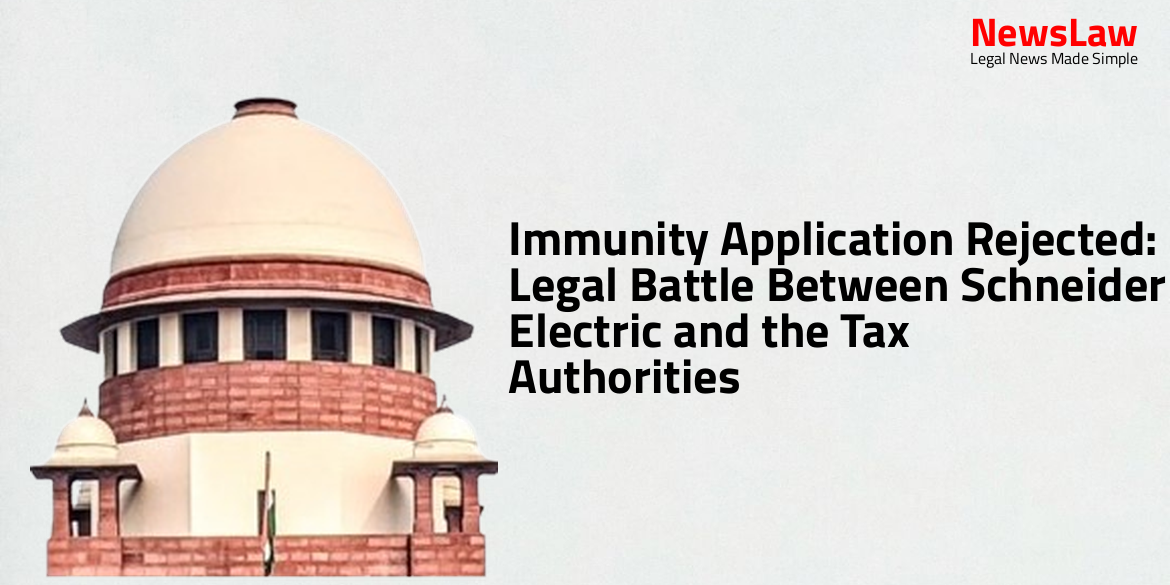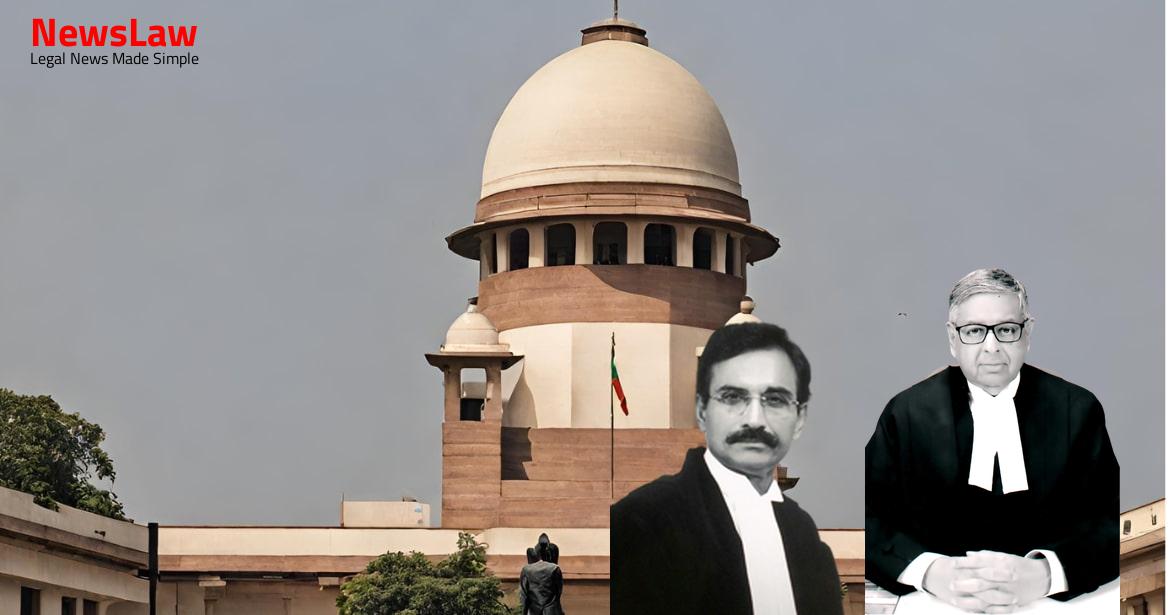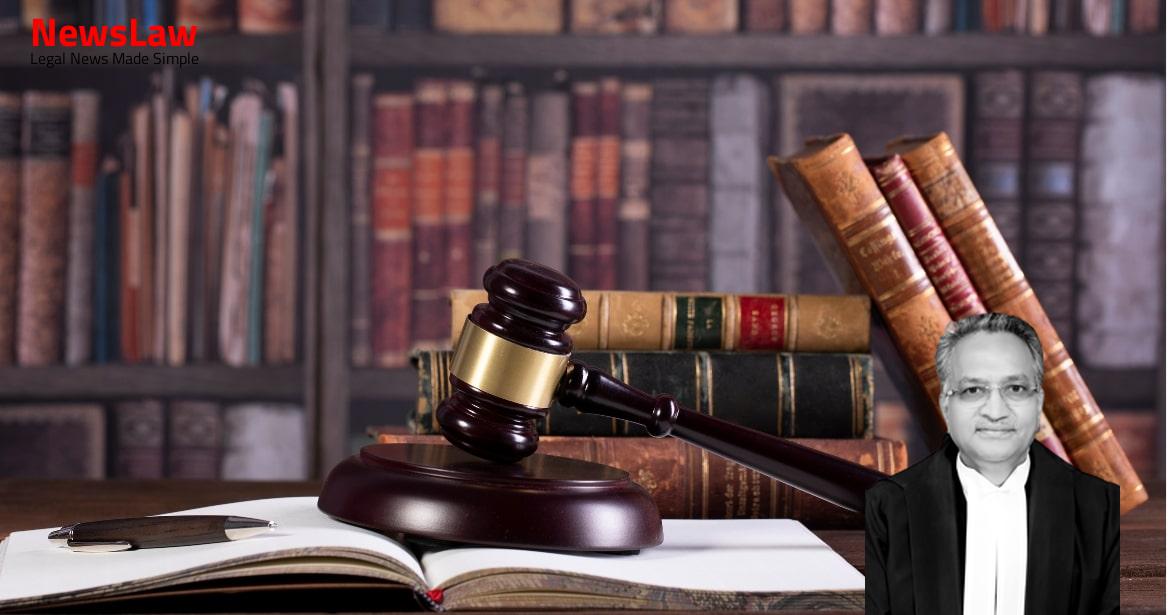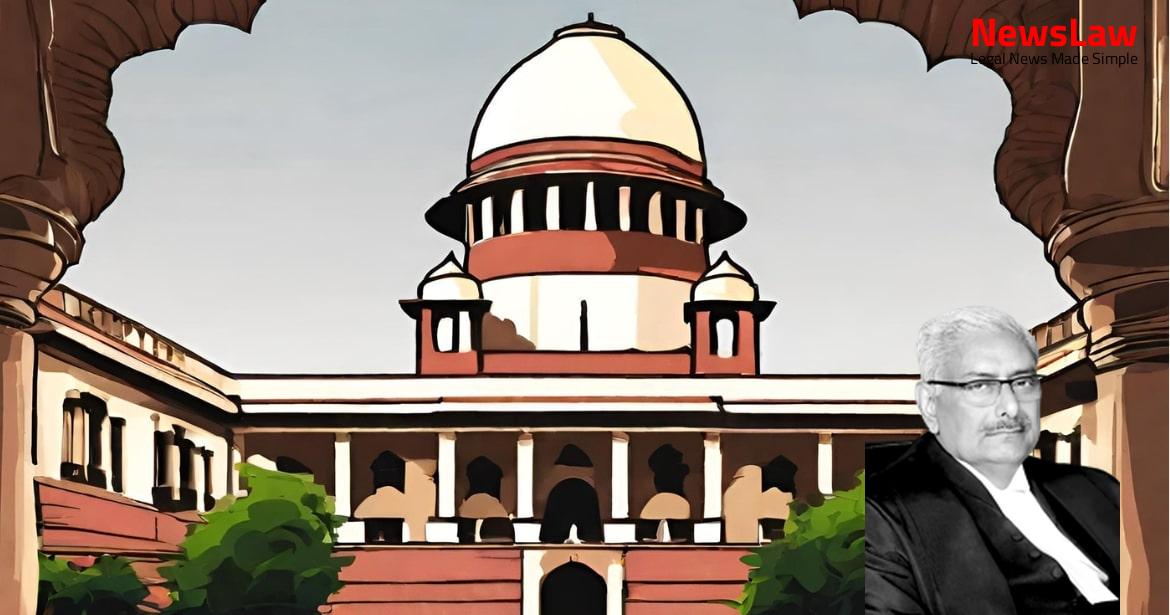In a landmark decision by the Delhi High Court, the legal battle between Schneider Electric and the Tax Authorities reaches a pivotal moment. The court’s judgment rejects the immunity application under Section 270AA, marking a significant turn in the tax law landscape. Stay tuned for more updates on this evolving case.
Arguments
- The petitioner argues that the payment constitutes ‘royalty’ under the DTAA and Section 9(1)(vi) of the Income-tax Act.
- The initiation of penalty proceedings based on alleged misreporting is deemed illegal without a determinative finding by the AO.
- The petitioner contends that the notices issued under Section 270A lack clarity on the specific violation.
- The petitioner highlights the distinction between under-reporting and misreporting as separate transgressions.
- The rejection of immunity under Section 270AA(1) is challenged as arbitrary given the petitioner’s compliance with conditions.
- The petitioner asserts that the respondent’s action under Section 270A is against the legislative intent to encourage settlement and reduce litigation.
- The petitioner argues that the assessment orders did not establish misreporting as per Section 270A(9).
- The Division Bench of the Court in Minu Bakshi highlighted the importance of establishing that assets seized during a search relate to the assessee’s income.
- The Tribunal’s decision regarding the notice for penalty imposition under Section 271(1)(c) not specifying the limb of the provision was aligned with previous decisions like CIT v. SSA’s Emerald Meadows and others.
- The principle of informing the assessee clearly about the charges was emphasized by a Division Bench in Schneider Electric in relation to Section 270A.
- The respondents’ counsel argued that while SCNs referred to both under-reporting/misreporting, the assessment orders clearly identified the case against the petitioner as misreporting.
Analysis
- Under-reported income arising from deemed total income under Section 115-JB or Section 115-JC determined using a specific formula.
- Conditions for considering under-reported income including differences in assessed income, maximum amount not chargeable to tax, and conversion of loss into income.
- Inclusion of amount in under-reported income for receipts, deposits, or investments claimed in preceding years with no penalty levied.
- Criteria for determining under-reported income in cases of reassessment, first-time assessment, or recomputation.
- Exclusions from under-reported income calculation based on explanations, correct accounting methods, estimates, transfer pricing compliance, and undisclosed income.
- Penalty for under-reported income set at fifty percent of tax payable, with higher penalty for misreporting.
- Provisions for applying for immunity from penalty and proceedings under specific conditions.
- Identification of misreporting offenses including misrepresentation, suppression of facts, false entries, and failure to report transactions.
- Calculation of tax payable on under-reported income based on different scenarios.
- Prohibition on penalty imposition for additions or disallowances already penalized in previous assessments.
- Authority responsible for imposing penalty on under-reported income.
- Directive for penalty imposition during proceedings for under-reported income.
- The issue revolves around the taxability of software services provided by the petitioner as royalty or fee for technical services (FTS) at a rate of 10%.
- The petitioner sought immunity under Section 270AA based on compliance with conditions precedent.
- The Assessing Officer did not specify the charge under Section 270A, leading to ambiguity in the penalty proceedings.
- The Assessing Officer failed to differentiate between under-reporting and misreporting of income, crucial for penalty imposition.
- The Show Cause Notices (SCNs) lacked clarity and specificity, violating principles established by previous court decisions.
- The SCNs did not assert the specific clause of Section 270A being invoked against the petitioner.
- The petitioner’s software services involved providing IT access rights and solutions, not just a set of program instructions.
- The assessments were conducted without clarity on the nature of the alleged violation in terms of under-reporting or misreporting.
- The payments received by the petitioner were argued to constitute royalty under the Income Tax Act and respective Double Taxation Avoidance Agreements (DTAAs).
- The applicability of tax treaties such as DTAAs was highlighted as potentially overriding domestic tax laws.
- The judgment in Engineering Analysis Centre of Excellence Private Limited v. CIT was used to differentiate the petitioner’s case from previous rulings.
- Overall, there was a lack of comprehensive and clear communication in the penalty proceedings, hindering the proper implementation of tax laws.
- The Supreme Court in Gorkha Security Services v. Government (NCT of Delhi) emphasized the importance of a valid show-cause notice.
- The notice must specify the grounds for the proposed action to enable the noticee to respond effectively.
- Failure to provide specific grounds deprives the noticee of a reasonable opportunity to be heard.
- Cited case law from Nasir Ahmad v. Custodian General, Evacuee Property highlighted the necessity of detailing alleged breaches and defaults in the notice.
- The nature of proposed action for the breach must also be clearly stated in the notice.
- In cases of blacklisting, stating the proposed action becomes even more crucial due to the severity of the measure.
- UMC Technologies Pvt. Ltd. v. Food Corporation of India reiterated the principle of natural justice where the affected party should be given a reasonable opportunity to defend themselves.
- Notice of the case against the affected party should be specific, clear, and unambiguous to ensure a fair chance to respond.
- It was necessary for the respondent to categorize the petitioner case as misreporting as this would justify rejection of immunity application.
- The impugned orders were found to be unsustainable upon review.
- The petitioner’s position was supported by a Supreme Court decision.
- The Assessing Officer (AO) chose to differentiate the judgment in Engineering Analysis.
- The petitioner had indeed fulfilled the requirements laid out in Section 270AA(1) as mandated by law.
Decision
- Petitions allowed and impugned orders dated 28 December 2021 and 24 January 2022 quashed.
- Application under Section 270AA of the Act rejected orders set aside.
- No justification for immunity applications to be pursued or remitted for further consideration.
- Petitioner entitled to consequential reliefs.
- SCNs’ dated 16 November 2021 quashed as they would not sustain in light of the judgment in Schneider Electric.
Case Title: GE CAPITAL US HOLDINGS INC Vs. DY. COMMISSIONER OF INCOME TAX INTERNATIONAL TAXATION & ORS. (2024:DHC:4535-DB)
Case Number: W.P.(C)-3312/2022



